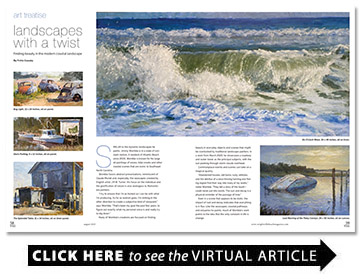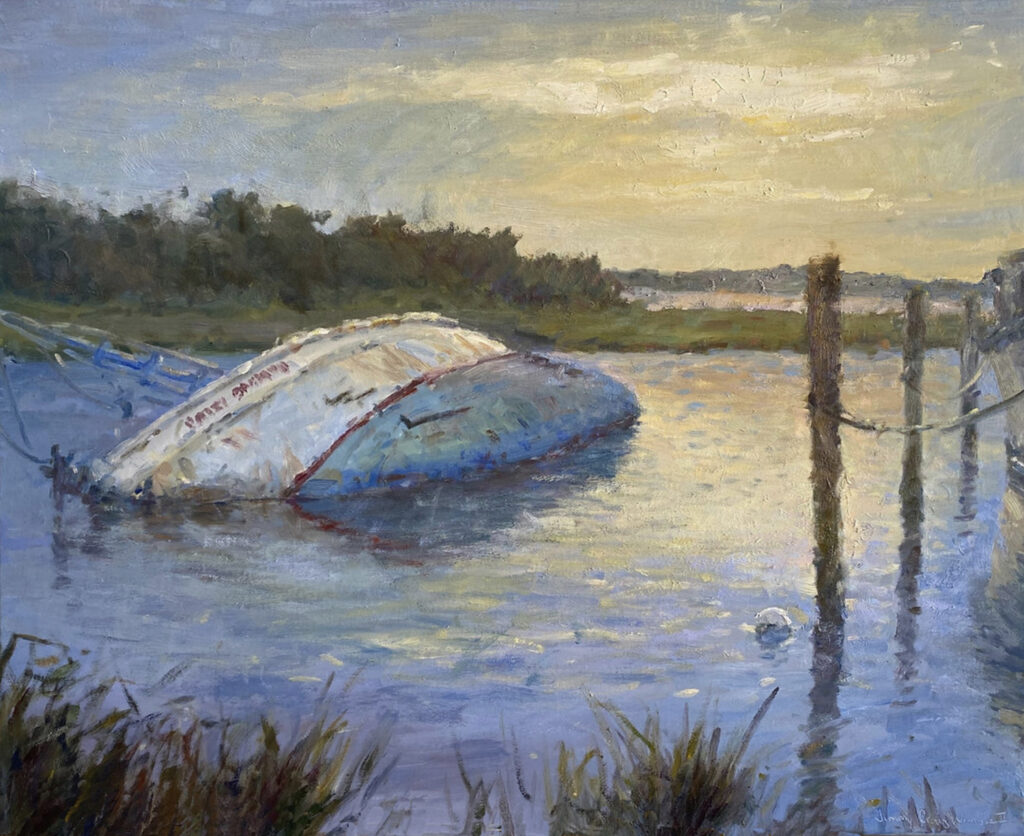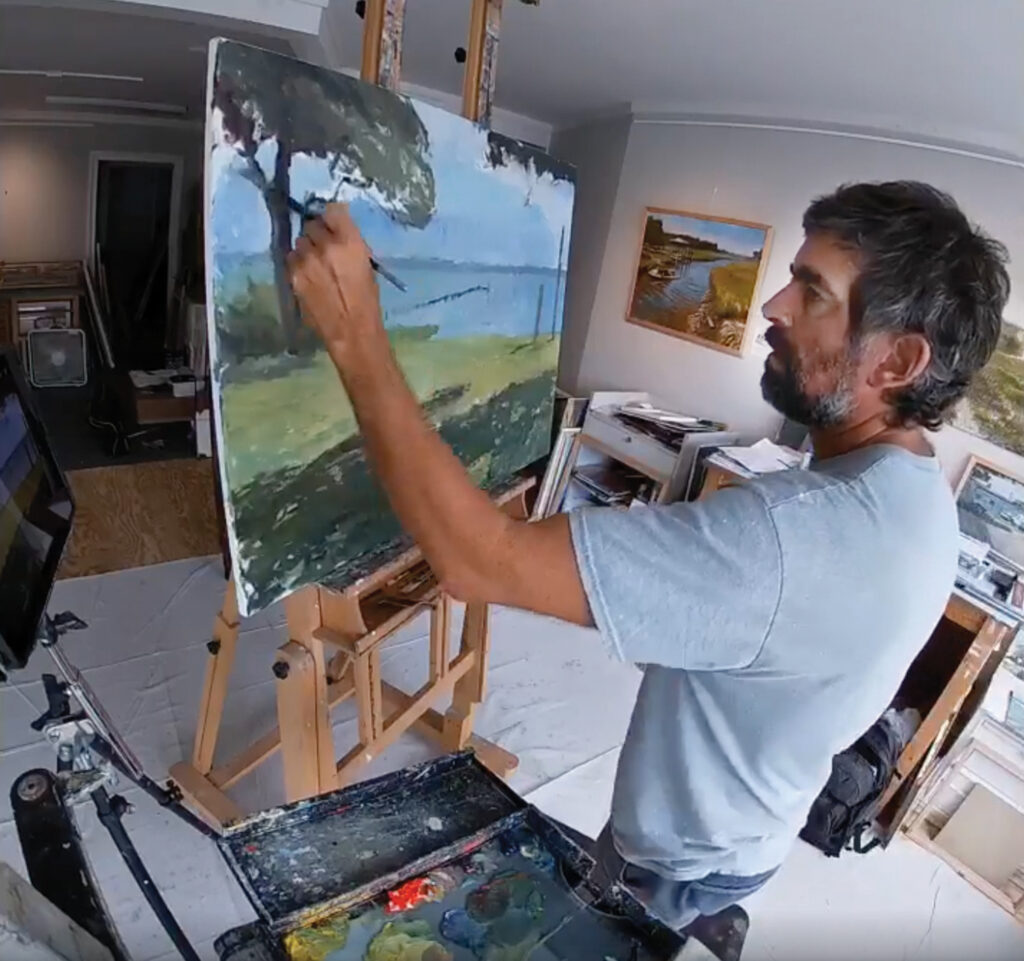Landscapes with a Twist
Finding beauty in the modern coastal landscape
BY Fritts Causby
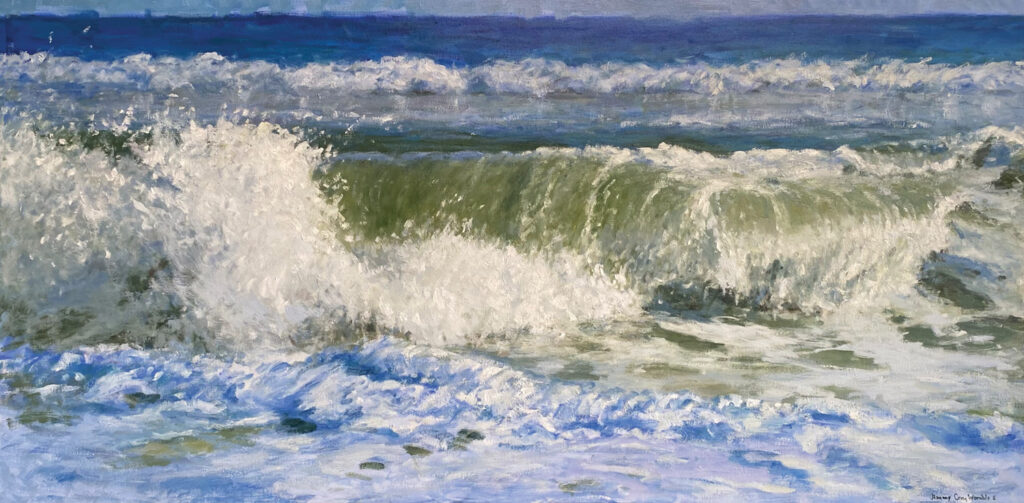
Similar to the dynamic landscapes he paints, Jimmy Womble is in a state of constant motion. A resident of Atlantic Beach since 2005, Womble is known for his large oil paintings of waves, tidal creeks and other coastal scenes that are iconic to Southeast North Carolina.
Womble favors abstract presentations, reminiscent of Claude Monet and, especially, the seascapes created by English artist J.M.W. Turner. His focus on the individual and the glorification of nature is also analogous to Romantic-era painters.
“I try to ensure that I’m as honest as I can be with what I’m producing. As far as realism goes, I’m striking in the other direction to create a subjective kind of viewpoint,” says Womble. “That’s been my goal the past few years, to figure out exactly what my personal voice is and really try to dig down.”
Many of Womble’s creations are focused on finding beauty in everyday objects and scenes that might be overlooked by traditional landscape painters. In a work from March 2023, he showcases a roadway and water tower as the principal subjects, with the sun peeking through storm clouds overhead.
Commonplace events and scenes can take on a magical quality.
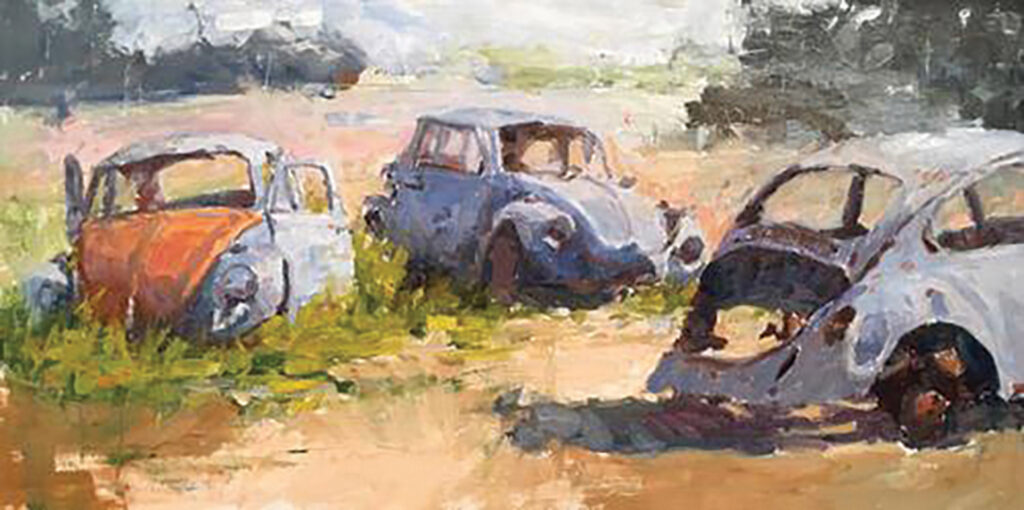
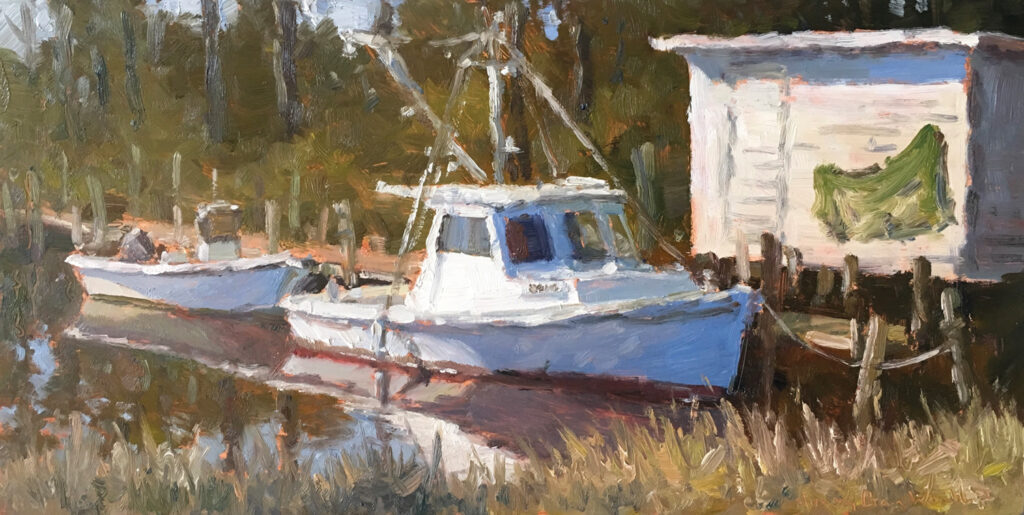
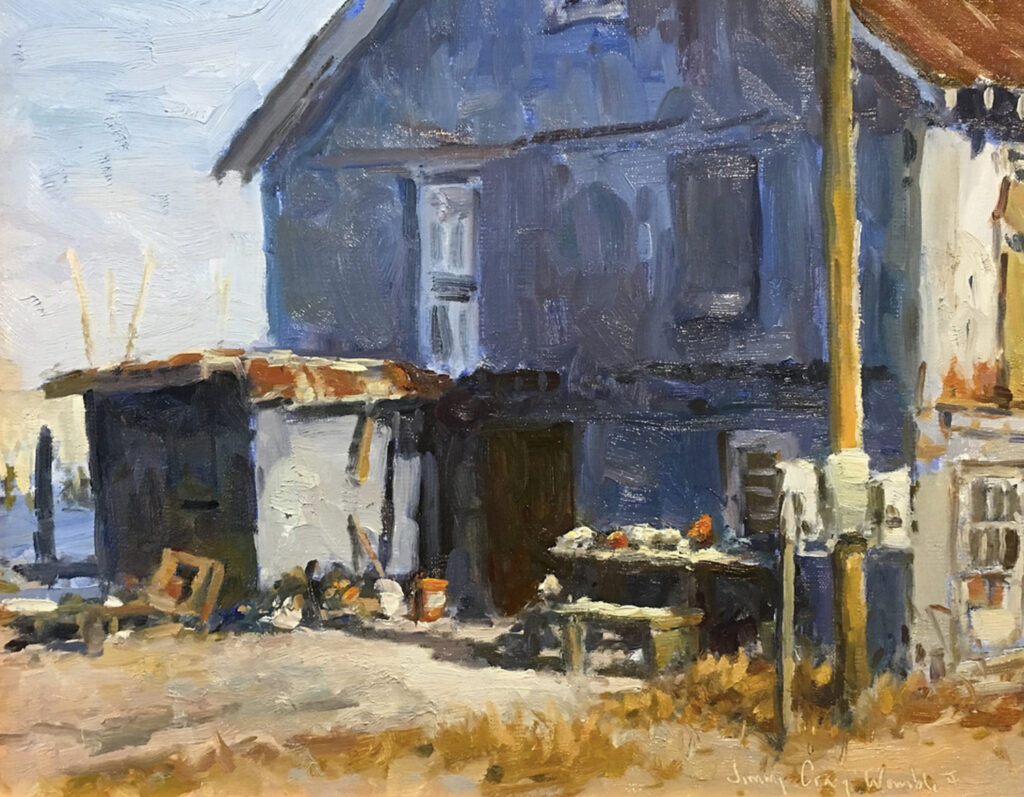
“Abandoned houses, old barns, rusty vehicles, and the detritus of a once thriving farming and fishing region find their way into many of my works,” notes Womble. “They tell a story of the South I could never put into words. The rust and decay is a physical reminder of the passage of time.”
Even in a scene that appears to be static, the impact of rust and decay indicates that everything is in flux. Like the seascapes, coastal pathways and estuaries he paints, much of Womble’s work points to the idea that the only constant in life is change.
“There’s a pathway through the dunes that I’ve drawn several times. I love the late afternoon light, the palette of colors, and the challenge of presenting the way that light bounces into the shadows,” Womble says.
A graduate of the NC State University Design School, he has been painting full time since 2005. In the beginning, he was mostly focused on old barns, rusty cars, “basically anything rusty on the side of the road.”
When he moved to the Crystal Coast in 2005, Womble adapted his work to the dynamics of the coastal environment, opting to focus on dilapidated fish houses, rusty boats and weathered old docks.
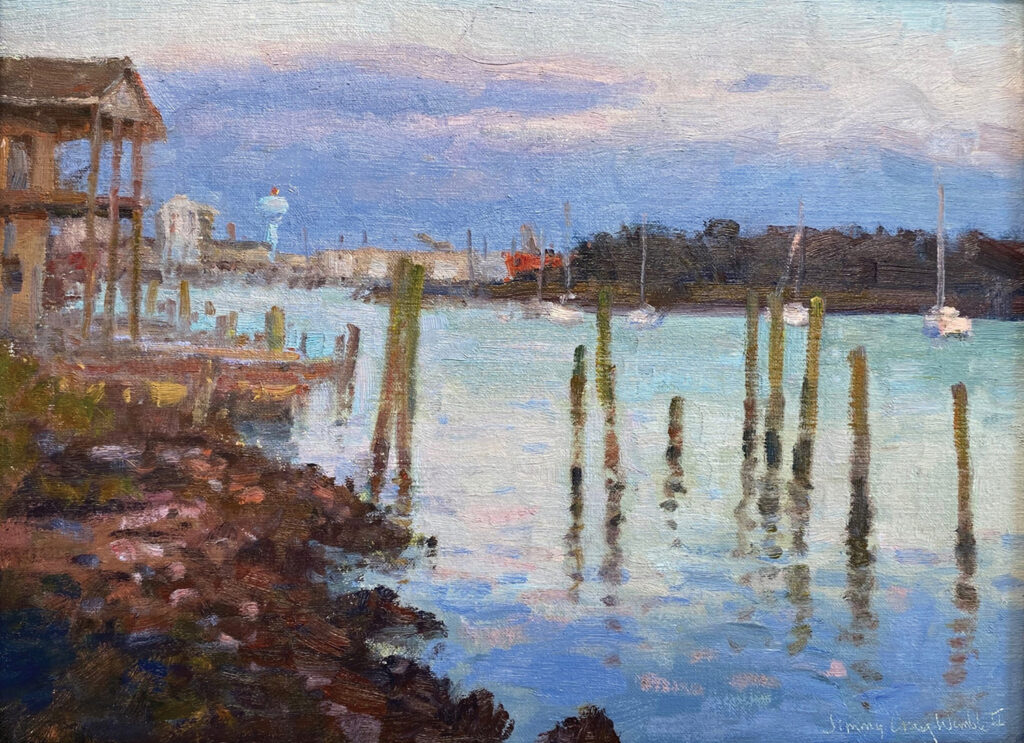
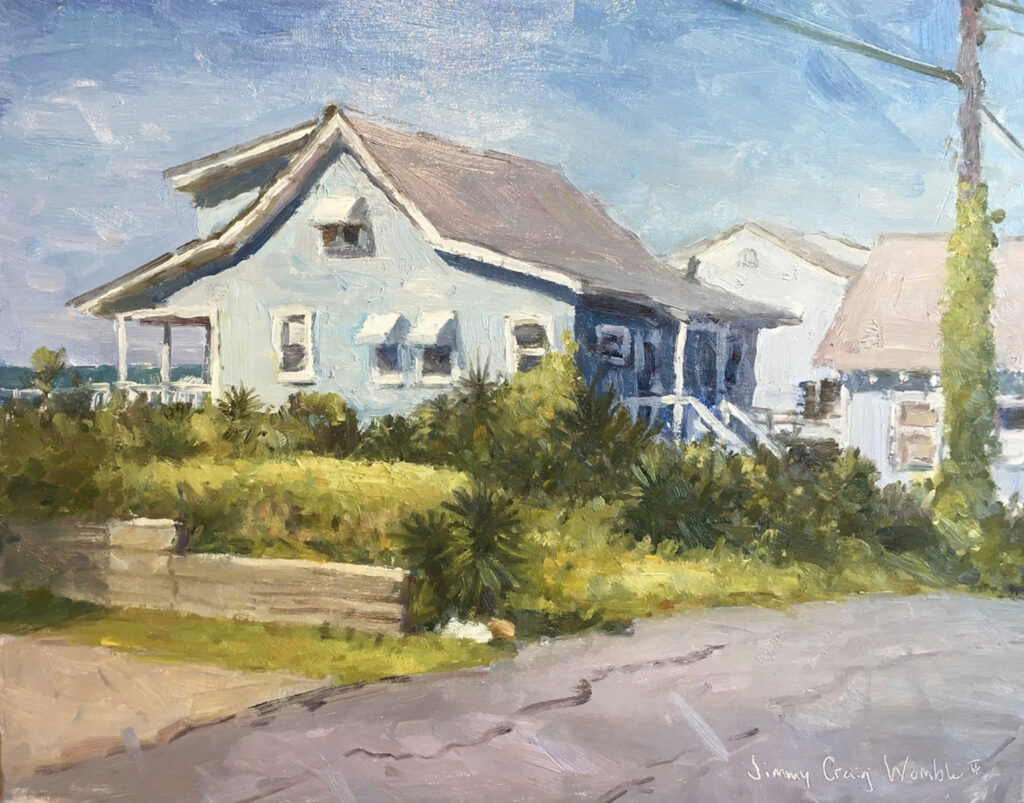
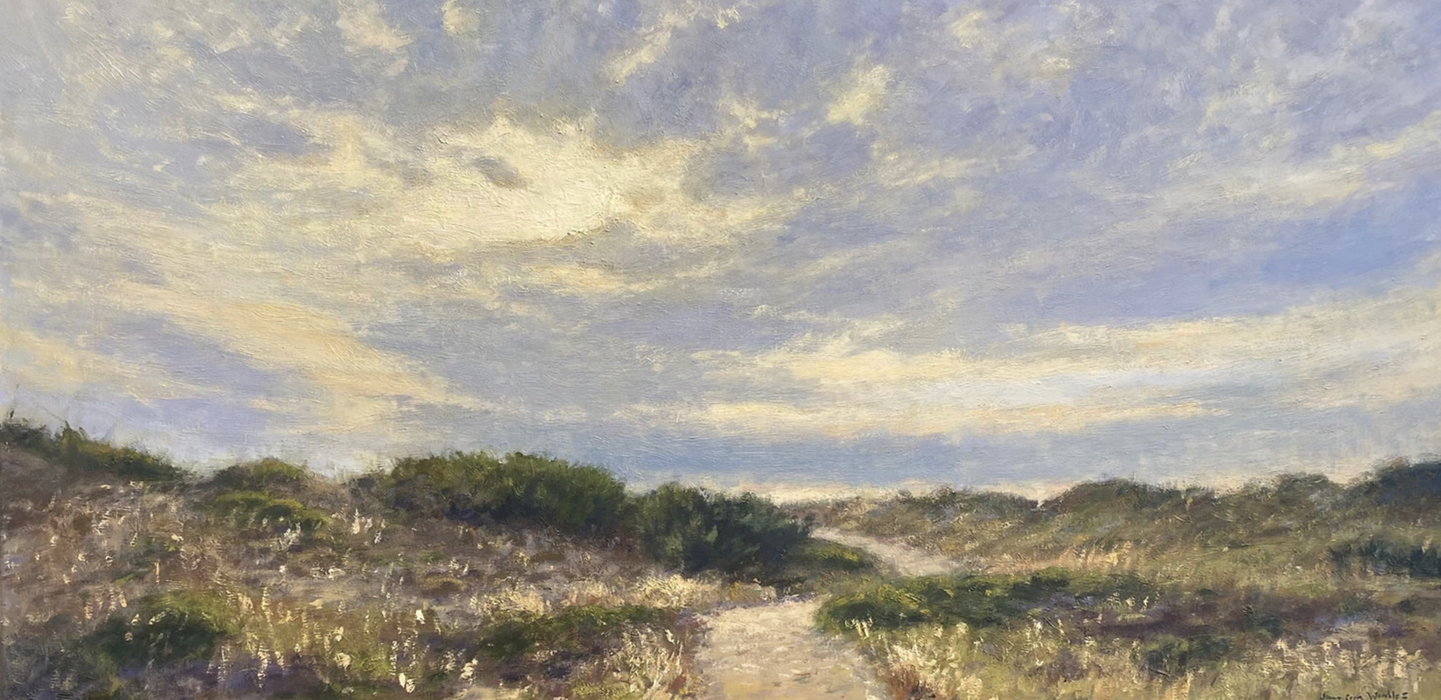
“I’ve always avoided the standard nature-things. It’s fun to have a different challenge and try and figure out how to do natural scenery, in a way that makes it interesting in a different way,” he says. “I almost always need to feel like I’m sort of uncomfortable or things get stagnant.”
Womble has added watercolors and sketches over the past few years.
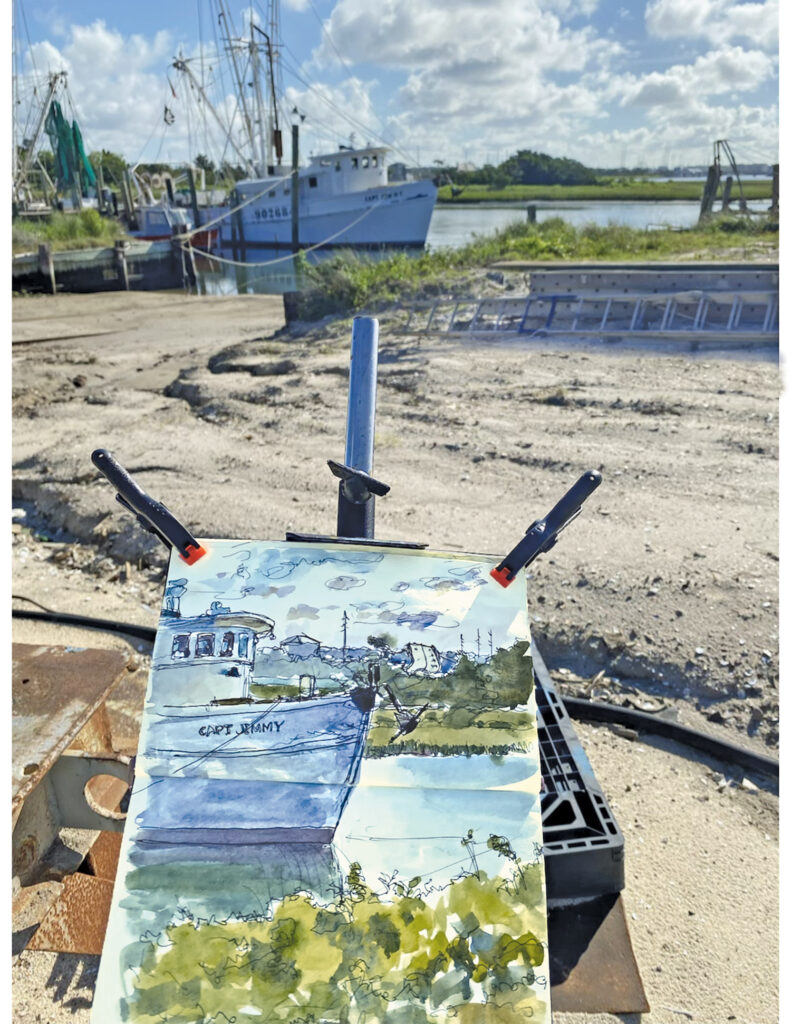
“I’m really attracted to watercolor and site sketches because I feel like they peel back all these layers. With water, pen and ink, you really can’t hide your imperfections or gloss things over too much,” he says.
Womble, who frequently works on commission, is grateful to the galleries and patrons that have supported him.
“It’s given me the freedom to go out and sort of really dig around and fail a lot, which is an important part of the growth process,” explains Womble, a father of two.
Womble is a perfectionist who believes the creation of art necessitates avoiding repetition.
“I have hundreds of paintings shoved in the back of the studio. I can’t bring myself to destroy them, but they’re not to the point where I’d feel comfortable putting them out there either,” he says.
